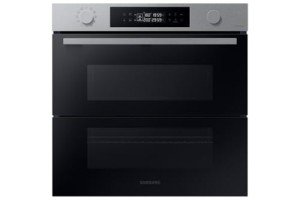15 Best Pinterest Boards To Pin On All Time About Built In Electric Ovens
Understanding Built-In Electric Ovens: A Comprehensive Guide
In the last few years, the kitchen has changed from merely a cooking area to a hub for household gatherings, amusing visitors, and enjoying quality time. One of the most pivotal elements of contemporary culinary experiences is the kitchen oven. Built-in electric ovens have actually gained tremendous popularity, thanks to their space-saving styles, streamlined aesthetic appeals, and advanced functions. This post offers an in-depth exploration of built-in electric ovens, covering their types, benefits, installation considerations, maintenance tips, and an extensive FAQ area.
What Are Built-In Electric Ovens?
Built-in electric ovens are integrated cooking systems designed to be installed directly into kitchen cabinetry or walls. Unlike traditional freestanding ovens, built-in models offer a smooth look, adding to the general style of the kitchen area. They come geared up with different cooking functions, advanced innovation, and energy-efficient features.
Types of Built-In Electric Ovens
Built-in electric ovens come in numerous designs to satisfy diverse culinary requirements and kitchen designs. Here are the most common types:
Single Ovens: Ideal for smaller sized kitchen areas, single ovens offer ample cooking area for everyday meals without taking up excessive room.
Double Ovens: For avid cooks or households that delight in hosting supper parties, double ovens offer the capability to prepare multiple meals at various temperatures at the same time.
Wall Ovens: Wall ovens are installed at eye level, making them easily available while getting rid of the requirement to flex down. They generally come in single or double setups.
Combination Ovens: These flexible appliances combine traditional oven cooking with microwave functionality, enabling quicker cooking times while protecting food flavor and texture.
Steam Ovens: Designed for health-conscious cooks, steam ovens use steam to cook food, preserving wetness and nutrients. They are best for veggies, fish, and rice meals.
Advantages of Built-In Electric Ovens
Built-in electric ovens provide many benefits for house owners looking to boost their cooking experience. A few of the advantages include:
Aesthetic Appeal: Their streamlined design allows for greater style versatility, fitting effortlessly into kitchen cabinetry and producing a refined appearance.
Area Efficiency: Built-in ovens conserve valuable flooring area, making them an exceptional choice for compact kitchen areas.
Enhanced Functionality: Many built-in electric ovens incorporate the most recent cooking innovations, such as convection cooking, smart controls, and multiple cooking modes.
Easy Accessibility: Models set up at eye level are simpler to gain access to, lowering pressure while examining or getting rid of food.
Increased Home Value: Installing a high-quality built-in electric oven can improve the resale worth of a home due to its modern-day and premium features.
Setup Considerations
While built-in electric ovens provide many benefits, proper installation is vital to guarantee they work efficiently. Below are crucial factors to consider to bear in mind:
Cabinet Size: Ensure that the cabinetry where the oven will be installed is sized correctly. Most built-in ovens featured particular measurements that should be adhered to throughout setup.
Electrical Requirements: Built-in electric ovens need a devoted electrical supply. Homeowners must seek advice from a certified electrical expert to ensure that the wiring meets the necessary specifications.
Ventilation: Unlike gas ovens, electric ovens typically do not need venting, but sufficient air blood circulation is very important to avoid getting too hot.
Placement: Consider the oven's positioning concerning kitchen workflow. It must be quickly available while thinking about clearances from other kitchen appliances.
Setup Steps
- Step the cabinet space to guarantee the oven fits.
- Guarantee the electrical supply is prepared.
- Thoroughly position the oven within its designated cabinet.
- Secure it based on producer instructions.
- Link to power and test its performance.
Upkeep Tips for Built-In Electric Ovens
To extend the life of a built-in electric oven and guarantee its trusted efficiency, carry out these maintenance ideas:
Regular Cleaning: Wipe spills and discolorations after each use. Usage appropriate cleaners, preferably mild, to prevent damaging the interior surfaces.
Inspect Seals: Inspect the door seals for cracks or damage, and change them if needed to preserve performance.
Adjust Temperature: Over time, ovens might lose accuracy. Utilize an oven thermometer to validate temperature level readings and recalibrate if required.
Yearly Professional Service: Schedule a professional examination and maintenance service a minimum of as soon as a year for comprehensive checks and repair work.
Often Asked Questions (FAQs)
1. What size built-in electric oven do I need?
The size of the oven should depend on your kitchen design and cooking requirements. Standard wall ovens usually range from 24 to 30 inches in width.
2. Can I set up a built-in electric oven myself?
While some property owners may have the abilities to install their oven, it is usually recommended to work with a professional to guarantee correct setup and compliance with safety requirements.
3. What features should I look for in a built-in electric oven?
Think about functions like convection cooking, self-cleaning options, clever technology, and numerous cooking modes to improve your cooking experience.
4. Just how much does a built-in electric oven cost?
Prices range considerably based upon brand name, functions, and size. A basic model may start around ₤ 500, while high-end choices can go beyond ₤ 3,000.
5. Are built-in electric ovens energy-efficient?
The majority of modern electric ovens come equipped with energy-efficient technologies, helping to decrease energy usage while keeping cooking performance.
Built-in electric ovens offer a mix of design, convenience, and advanced cooking capabilities, making them an essential addition to today's kitchens. By understanding built-in / integrated hobs and ovens , benefits, installation factors to consider, and appropriate maintenance, house owners can make informed choices that optimize their cooking experiences while enhancing their kitchen's visual appeals. Whether one is a seasoned chef or a casual cook, buying a built-in electric oven can change the cooking experience into a wonderful culinary journey.
